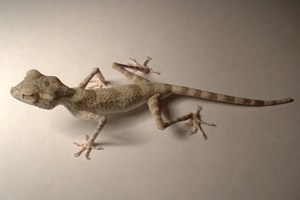Type the name of the breed you're looking for below
[wpdreams_ajaxsearchlite] Don't see the breed your're looking for? Click here and let us know!
Spider Gecko
| Place of Origin and Range | Agamura persica, commonly known as the Persian spider gecko, hails from semidesert regions of Iran, Pakistan, and Afghanistan, where temperatures range from extreme summer day highs to extreme winter night lows |
| Description | Its long, slender legs and tail give it a spider-like impression and allow it to climb in its rocky habitat. The toes are slender, clawed, and angularly bent. It shares this feature with a number of other species and is classified as an angular-toed gecko. |
| Morph Patterns Available | Yes |
| Adult Size | Can grow up to 12 in ( 30 cm ) |
| Accommodation | Its native habitat is rainforest trees and cliffs, and it also frequently adapts to rural human habitations, roaming walls and ceilings at night in search of insect prey. Most geckos prefer warm habitat with lots of shade and hides. High humidity and lots of branches for climbing. Provide a small water dish and mist twice daily. Cover the sides of the cage when possible to prevent injury to your gecko from running into glass. |
| Lifespan | Can live 23 + years |
| Feeding / Diet | Mainly insects and prepared gecko diet. |
| Other Considerations | Healthy geckos with appropriate living conditions shed regularly. They shed completely and often eat their shed to the point where the keeper may not even notice that the gecko has shed. Some geckos experience shedding problems occasionally and others chronically have difficulty shedding. Signs of shedding difficulty range from large sheets of shed clinging to the head, tail or limbs to residual shed left around the eyes, on the tail tip or the toes. This shed must be removed since it can cause constrictive damage to the extremities. All geckos require calcium to maintain strong bones and vitamin D3 to aid in metabolizing the calcium. Calcium is generally supplied in powdered form in a bowl, through dusted feeders or as an ingredient in fruit. |



